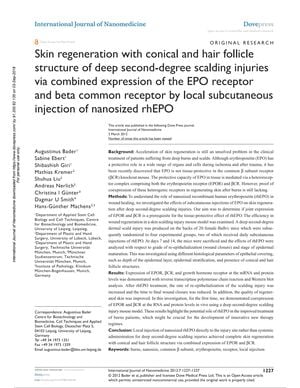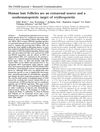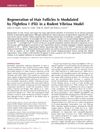Skin Regeneration with Conical and Hair Follicle Structure of Deep Second-Degree Scalding Injuries via Combined Expression of the EPO Receptor and Beta Common Receptor by Local Subcutaneous Injection of Nanosized rhEPO
March 2012
in “
International journal of nanomedicine
”

TLDR Local injections of nanosized rhEPO can speed up skin healing and improve quality after deep second-degree burns.
In a study conducted on 20 female Balb/c mice with deep second-degree scalding injuries, local subcutaneous injections of nanosized recombinant human erythropoietin (rhEPO) were found to accelerate skin regeneration and improve the quality of the regenerated skin, including the formation of conical and hair follicle structures. The study demonstrated for the first time the coexpression of erythropoietin receptor (EPOR) and the common β subunit receptor (βCR) at the RNA and protein levels in vivo in a mouse model of deep second-degree scalding injury. The results indicated that the joint expression of EPOR and βCR is essential for the tissue-protective effects of rhEPO. The treatment with rhEPO led to increased rates of re-epithelialization and reduced time to wound closure. These findings suggest that local injection of nanosized rhEPO could be a potential new treatment strategy for patients with deep second-degree burns.

